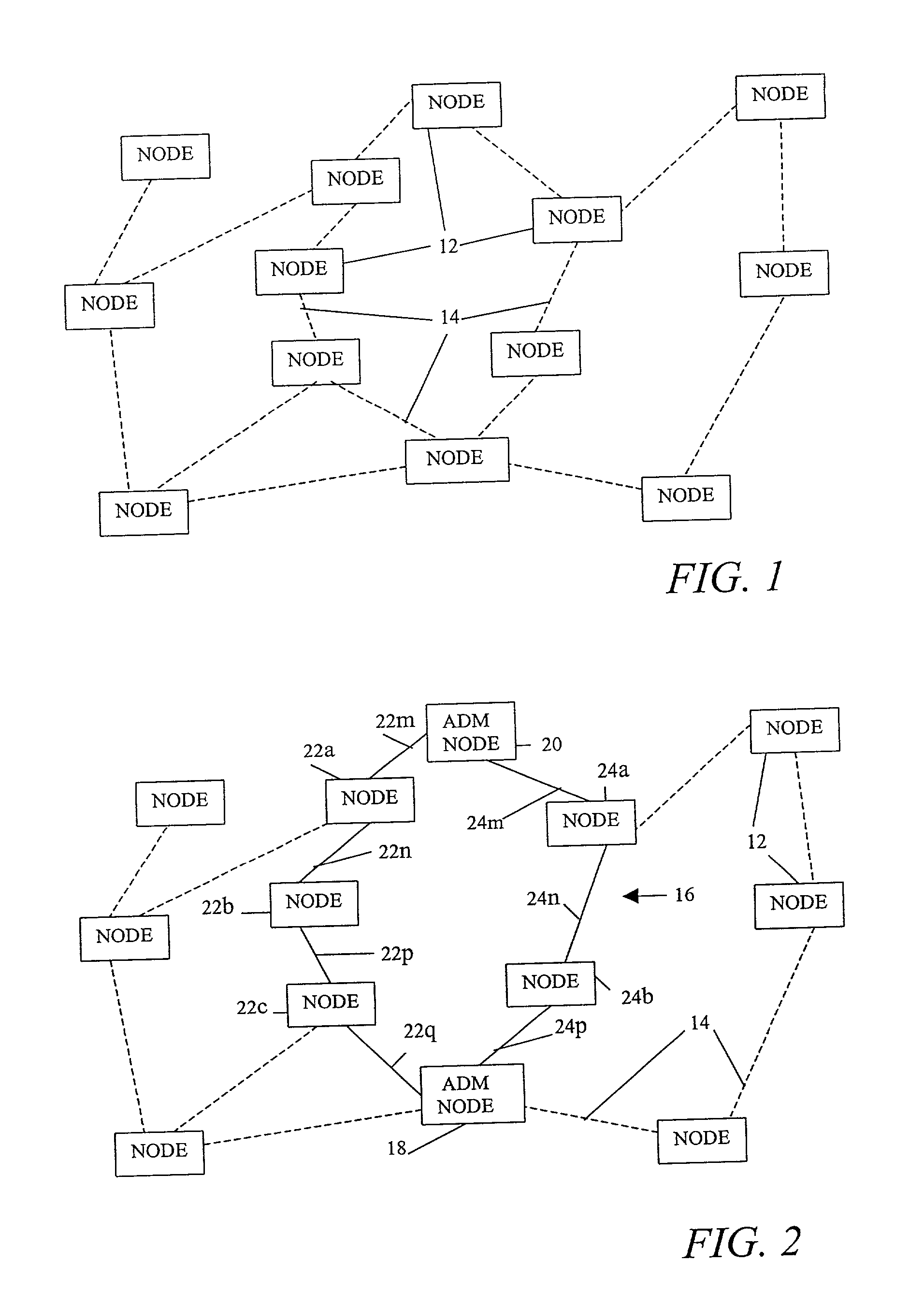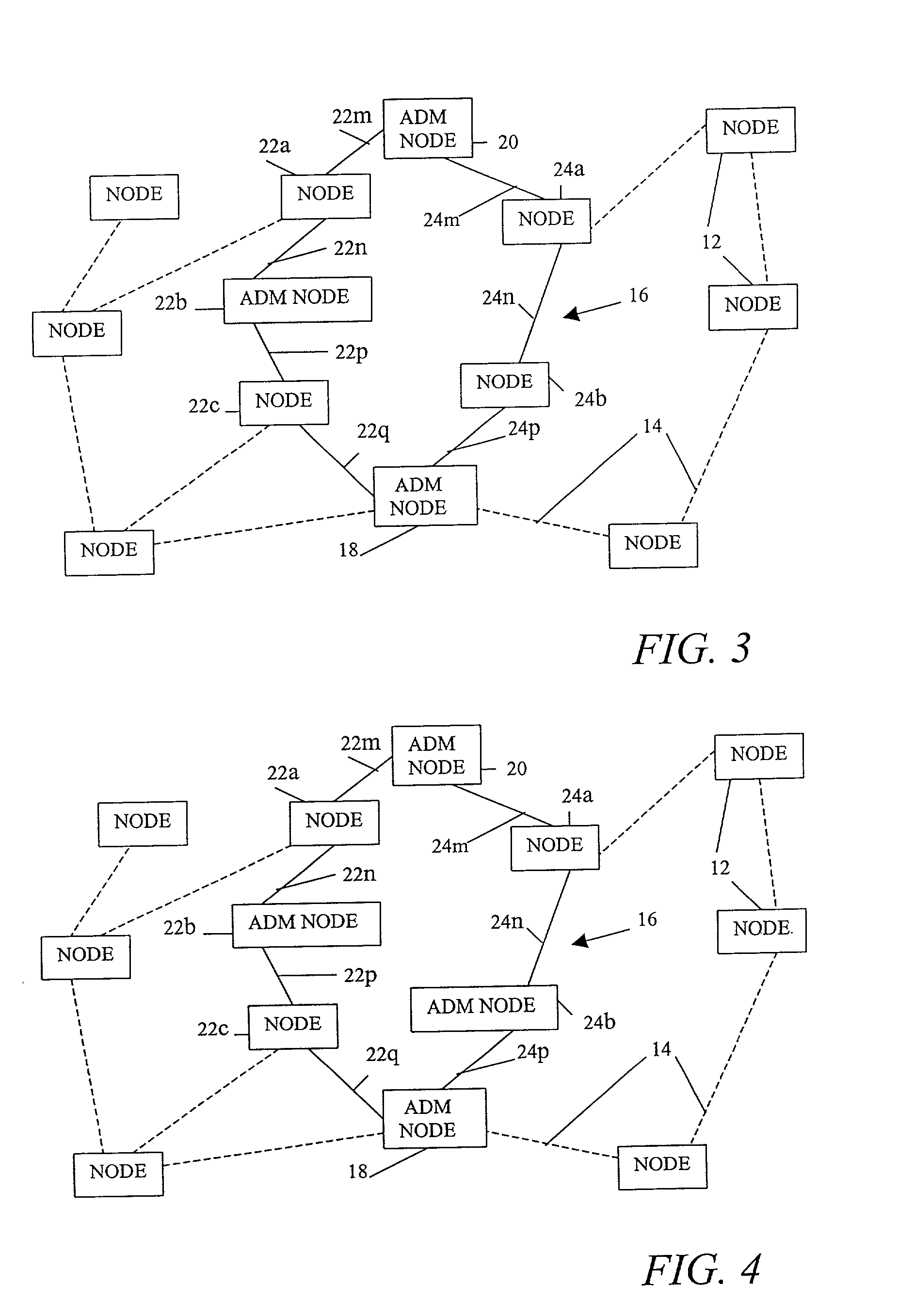Method for designing rings in telecommunications network
a telecommunications network and design method technology, applied in data switching networks, frequency-division multiplexes, instruments, etc., can solve the problems of dwdm economics for metropolitan areas much more difficult to achieve, ring routings with awkward routings, and the cost of dwdm equipment for metropolitan areas has fallen mostly, so as to eliminate the bias towards larger rings, the effect of flexible discovery and tighter and flexibleness
- Summary
- Abstract
- Description
- Claims
- Application Information
AI Technical Summary
Benefits of technology
Problems solved by technology
Method used
Image
Examples
example 1
[0090] FIG. 7 below shows a layout of an example study network having eleven nodes N1-N11. This network is taken from the downtown area of a large metropolitan LATA. Note that although the network data were taken from an actual LATA, the layout of the network has been altered to preserve anonymity, and the network is not drawn to scale. The actual data used for the network design analysis included fiber links, node locations, demand levels, and cost models for WDM and SONET equipment.
[0091] The cost models for DWDM and SONET used here are representative of generic costs for such equipment and were obtained from averaging a variety of vendor prices for identical equipment. A single year study technique was used to demonstrate the results that are representative of metropolitan DWDM and available from the network design method as discussed hereinabove with reference to FIGS. 1-6. It is to be noted that due to the comparatively small distances in the network of FIG. 7, the constraint a...
example 2
[0099] The exemplary network of FIG. 8 has five nodes NA, NB, NC, ND, and NE and six links NA-NB, NB-NC, NC-ND, ND-NE, NE-NA, and NA-ND. It is assumed that the largest as yet unprocessed demand is between node NA and node NC. Then the process described above particularly with reference to FIGS. 5 and 6 will generate the cycle consisting of node NA, link NA-ND, node ND, link ND-NC, node NC, link NC-NB, node NB, and NB-NA. This example assumes that each link is one unit long. Now consider that the demands on this cycle are:
6TABLE 6 Examples of Demands in Network From To Node Node Units of Demand NA NB 2 NA NC 20 NA ND 5 NB NC 1 NB ND 3 NC ND 8
[0100] It is calculated that node NB has 3 units of demand between itself and the current community of interest, that is, nodes NA and NC. This demand includes 2 units of demand between nodes NA and NB and 1 unit of demand between nodes NB and NC. Node ND on the other hand, has demand to node NA (5 demand units) and node NC (8 demand units) for a...
PUM
 Login to View More
Login to View More Abstract
Description
Claims
Application Information
 Login to View More
Login to View More - R&D
- Intellectual Property
- Life Sciences
- Materials
- Tech Scout
- Unparalleled Data Quality
- Higher Quality Content
- 60% Fewer Hallucinations
Browse by: Latest US Patents, China's latest patents, Technical Efficacy Thesaurus, Application Domain, Technology Topic, Popular Technical Reports.
© 2025 PatSnap. All rights reserved.Legal|Privacy policy|Modern Slavery Act Transparency Statement|Sitemap|About US| Contact US: help@patsnap.com



